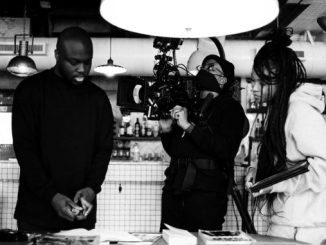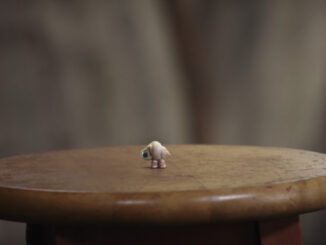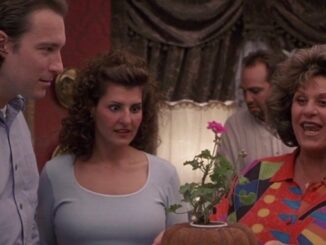The artist Ragnar Kjartansson may sound familiar here in Toronto. You might have experienced his art installation titled “Death is Everywhere” at the Art Gallery of Ontario in recent years. It was a personal favourite. The hauntingly beautiful music played on repeat while visitors watched couples walking with the vast Icelandic landscape was truly breathtaking. The work was so moving that I found myself visiting the installation often just to immerse myself in all the feels.
Soviet Barbara: The Story of Ragnar Kjartansson in Moscow, by filmmaker Guakar Úlfarrson was slated to be screened at this year’s Hot Docs Film Festival, it immediately went on my must-see list.
The film documented the days leading up to the opening of Ragnar Kjartansson’s controversial exhibition. It was scheduled to open in December of 2021 — on the eve of Russia’s invasion into Ukraine. At a brand new arts centre (a former power plant for the Kremlin) in the heart of Moscow, the artist created a monumental “living sculpture” inspired by the American soap opera Santa Barbara.
In 1992, after the fall of the Soviet Union, Santa Barbara became a hit with Russians. The television series offered a window to the American way of life and became very popular. Then, three decades later, the contemporary Icelandic artist, Kjartansson, brought it back to life.
The artist enlisted a group of 70 people to re-enact one episode of Santa Barbara every day in Russian. The goal was to produce 100 re-enacted episodes during the run of the exhibition. However, everything halted on the day of the invasion.
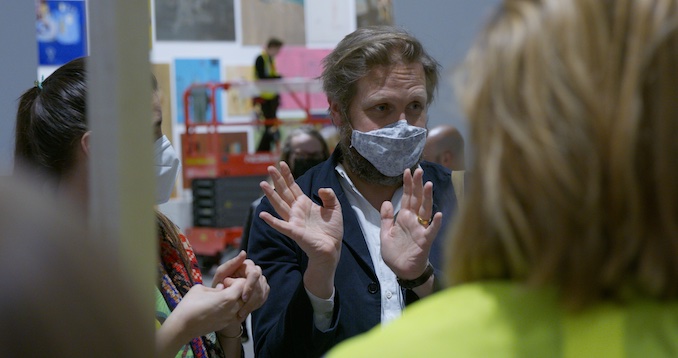
The documentary offers an insightful and ambitious look into the ideas of one of today’s biggest names in contemporary art. Soviet Barbara poetically captures the cultural dialogue between rival superpowers in the last days of the cold war, and the way ordinary people in Russia lived through times of dramatic change. The documentary also captures the tensions between soviet history and modern capitalism, as life imitates art.
We had a chance to ask filmmaker Guakar Úlfarrson more about this documentary as made its World Premiere in Toronto at this year’s Hot Docs Film Festival.
As a filmmaker documenting this exhibition’s opening what was going through your mind as the political situation was mounting?
GU: We were in Moscow for three weeks before and after the opening of GES-2 in December 2021. At the time tensions were mounting at the Russia-Ukraine border and we just like the rest of the world got sketchy information through the news. In Moscow, we had talks with the locals about this and everyone just thought that Putin was flexing his muscles. They also said it did not matter how many revolutions they went through they always ended up with some type of Ivan the Terrible. At the time we mostly thought about Ragnar and art, less about tanks and guns. In February, with a few days left of Ragnar’s live sculpture, that changed completely and Ragnar shut down the exhibition.
In the documentary Ragnar appears still very focused and calm amidst the backdrop, what can you tell us?
GU: His professional attitude is always a hundred percent, mixed with his usual playfulness and joy. But to us he looks, in the Moscow part of the film, at least ten years older than he is at the moment. And we know he totally agrees.
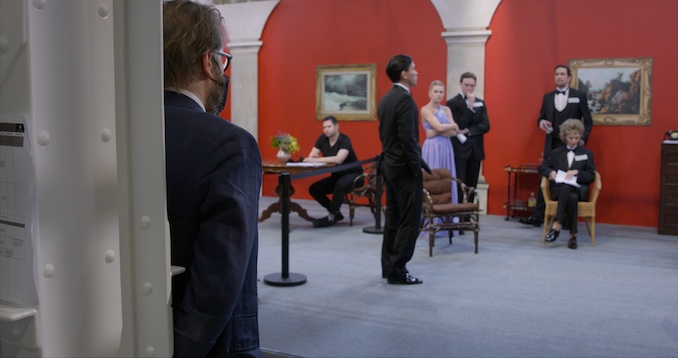
What surprised you the most about Ragnar and working on this documentary?
GU: We were very surprised to see the forces that contemporary artists of the highest order can face in this sort of situation. And we were also surprised how fully Ragnar was willing to trust us with portraying him in the documentary. His trust was very important and beautiful. As Albert Maysles has been quoted on: every documentary is a journey into the heart and soul of subject.
Do you have a sense of how the exhibition was received and if it continued to run the duration as scheduled?
GU: We know that the exhibition was well received by different voices within the Russian art world. The international press was also very open to it. It ran for 81 out of 100 days, ending with the invasion. 81 episodes of Santa Barbara in Russian were made, then the dream ended and the Cold War continued.
What do you wish people would know about your film?
GU: We hope people will get a feeling for Ragnar Kjartansson and his amazing and ambitious work. We also are also hoping to portray the twist and turns of such a big task as his Moscow story was. But then of course the documentary speaks for itself.
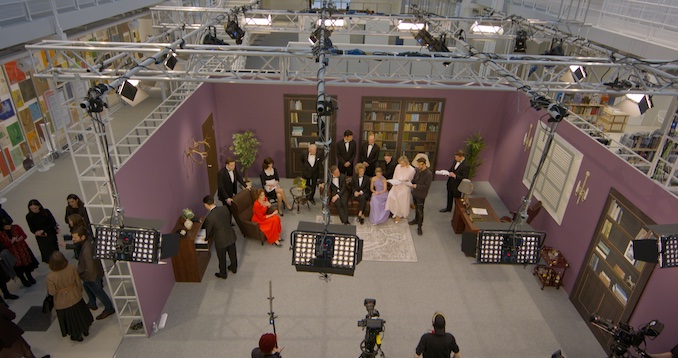
Screenings for Soviet Barbara: The Story of Ragnar Kjartansson in Moscow at the 2023 Hot Docs Canadian International Documentary Festival:
April 28, 2023 – 5:45pm
TIFF Bell Lightbox World Premiere
May 8, 2023 – 8:30pm
Isabel Bader Theatre
Tickets are available at hotdocs.ca
About the Director, Gaukur Úlfarsson…
Born in Reykjavík in 1973, Gaukur studied at Arts Collage Fjölbraut í Breiðholti and travelled the world with well-known Icelandic band Quarashi as bass player. Following his passion for art and music, Gaukur began making music videos before transitioning into television and cinema. Gaukur has worked as a director since the 2000’s and received numerous awards and accolades for his work, including his documentary films, music videos, and other material in Iceland and around the world.
More insight into the art exhibition can be found in this NY Times article.


